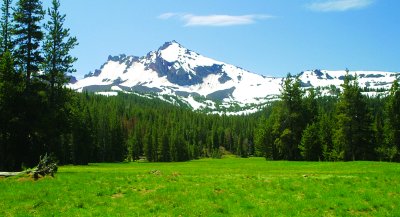 This summer, Oregon-based developers 818 Powell Butte LLC applied to build Central Oregon’s 11th destination resort — a sign that the resort market has yet to reach its peak.
This summer, Oregon-based developers 818 Powell Butte LLC applied to build Central Oregon’s 11th destination resort — a sign that the resort market has yet to reach its peak.
|
CROOK COUNTY This summer, Oregon-based developers 818 Powell Butte LLC applied to build Central Oregon’s 11th destination resort — a sign that the resort market has yet to reach its peak, according to Linda Swearingen, a consultant and lobbyist for the industry.
At 580 acres, Seven Peaks is one of the smallest destination resorts in the nexus formed by Deschutes, Crook and Jackson counties. But it arrives in a year when residents, and officials in neighboring cities like Redmond, have voiced concern and criticism about the traffic and infrastructure impacts of new resorts. This year, Sen. Ben Westlund, D-Bend, introduced legislation that would have prohibited resorts near the Metolious River in Jefferson County.
The bill died after Gov. Ted Kulongoski threatened a veto, saying local land-use laws could sufficiently handle any siting conflicts. Despite its death, Erik Kancler, the executive director of Central Oregon Land Watch, a critic of the resort industry, says some developers will probably heed the bill’s intent. “At the very least, if they propose to build in sensitive or beloved areas, or it will impact an endangered species, they’ll think twice,” he says.
Seven Peaks doesn’t fall into the category of a sensitive area. It sits in the Powell Butte area, now the epicenter of destination resorts in Crook County. Hidden Canyon (3,200 acres), Remington Ranch (2,200 acres) and Brasada Ranch (1,900 acres) are all nearby.
Which begs the question: When will Central Oregon reach a saturation point? There are different kinds of saturation; Kancler mentions the cumulative impacts on the region’s infrastructure and environment.
Swearingen says the best indicator of market saturation is the developers and investors who’ve done the research before putting up millions of dollars for construction.
As she puts it: “You don’t come in on a wing and a prayer to develop these resorts.” In other words: Market saturation? Not yet.
ABRAHAM HYATT
Have an opinion? E-mail [email protected]


